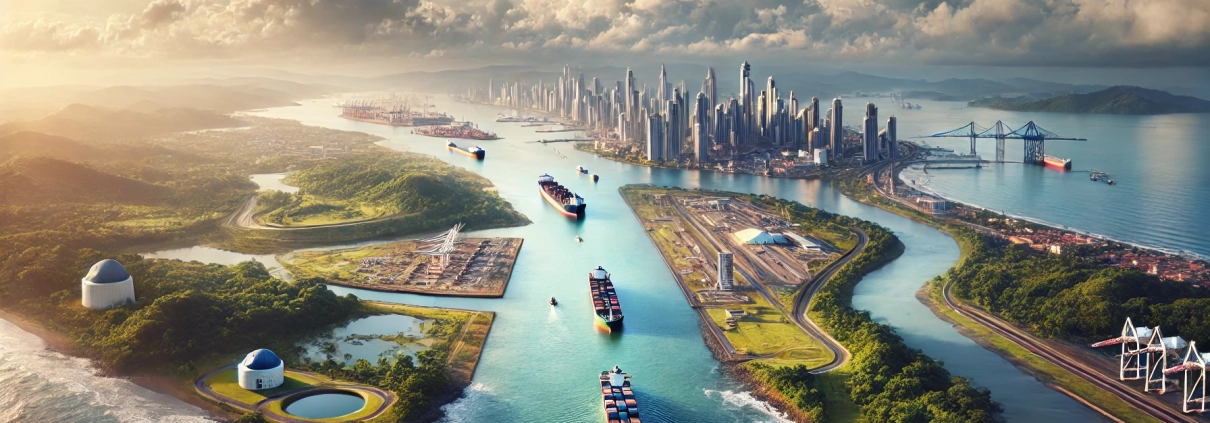Contingency Cost
An estimated amount set aside by the developer and/or the contractor in order to account for any unknown risks (added and unexpected costs) associated with the project. These costs are designed to cover unforeseen expenses which are not precisely known at the time of estimate but which the contractor expects will occur based on statistical probabilities and personal experience.
Putting ‘Contingency Cost’ in Context
Scenario:
Global Industrial Ventures, a multinational real estate development firm, is undertaking the development of a large-scale warehouse and distribution center named Pacifico Logistics Center in the Panama Pacifico free trade zone in Panama City, Panama. The project involves the construction of a 500,000-square-foot state-of-the-art facility designed to attract global e-commerce and logistics companies. The location in the free trade zone offers strategic advantages, such as tax incentives and proximity to the Panama Canal, making it a prime spot for distribution hubs serving the Americas.
Project Overview:
Given the scale of the development, the total project cost is estimated at $50 million. However, recognizing the complexities involved in constructing a facility in a region with variable weather conditions, fluctuating material costs, and potential logistical challenges due to the site’s proximity to the canal, the project management team, led by a seasoned Project Manager, decides to incorporate a contingency cost into the budget.
Contingency Cost Calculation:
Based on industry standards and the firm’s experience with similar projects, the Project Manager estimates that a 10% contingency should be added to the total project cost to cover unforeseen expenses. This contingency cost is designed to account for unexpected issues such as delays caused by heavy rain during the rainy season, unexpected ground conditions that require additional excavation, or a sudden increase in the cost of steel.
- Base Project Cost: $50,000,000
- Contingency Percentage: 10%
- Contingency Cost: $50,000,000 * 10% = $5,000,000
Thus, the total project budget is adjusted to $55,000,000, which includes the $5 million contingency cost.
Utilization of Contingency Cost:
As construction progresses, several unforeseen challenges arise. The first issue is a delay in material deliveries due to a temporary blockage of the Panama Canal, which increases shipping costs. Additionally, the construction team encounters unexpected soil conditions that require more extensive foundation work than originally planned. These issues lead to additional costs that are covered by the contingency fund.
Without the $5 million contingency set aside, the project would face significant delays and potential cost overruns, affecting the overall viability and profitability of the development. By proactively including the contingency cost in the budget, Global Industrial Ventures ensures that the Pacifico Logistics Center remains on track for completion and within the financial parameters set by the firm.
Conclusion:
The inclusion of a contingency cost is a crucial aspect of project budgeting, particularly in large-scale developments with inherent risks such as those faced in the Panama Pacifico free trade zone. This reserve allows developers like Global Industrial Ventures to manage unforeseen expenses effectively, maintaining both the timeline and the financial integrity of the project.
Frequently Asked Questions about Contingency Cost in Real Estate Development
What is a contingency cost?
A contingency cost is “an estimated amount set aside by the developer and/or the contractor in order to account for any unknown risks (added and unexpected costs) associated with the project.” It acts as a financial buffer for unforeseen expenses.
Why are contingency costs included in a project budget?
They help manage uncertainty and reduce the risk of budget overruns. As stated, these costs are “designed to cover unforeseen expenses… which the contractor expects will occur based on statistical probabilities and personal experience.”
How is a contingency cost typically calculated?
It is usually a percentage of the base project cost. In the Pacifico Logistics Center scenario, a 10% contingency was applied to the $50 million base cost, resulting in a $5 million contingency reserve.
What types of risks does a contingency cost cover?
Examples include delays due to weather, unexpected soil or ground conditions, material cost increases, and shipping or logistical disruptions—as occurred in the scenario with canal blockages and soil issues.
What was the total adjusted budget for the Pacifico Logistics Center?
With a 10% contingency added to the $50 million base cost, the total adjusted project budget was $55 million.
How did the contingency cost help the Pacifico Logistics Center project?
The $5 million contingency covered unexpected costs like foundation work and increased shipping fees, helping the project stay on schedule and within financial targets. Without it, the project could have faced delays and cost overruns.
Who typically sets the contingency cost in a development project?
It is usually estimated by the project management team or lead developer, often in consultation with contractors. In the scenario, the Project Manager set a 10% contingency based on industry standards and past experience.
Click here to get this CRE Glossary in an eBook (PDF) format.

